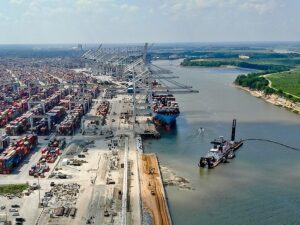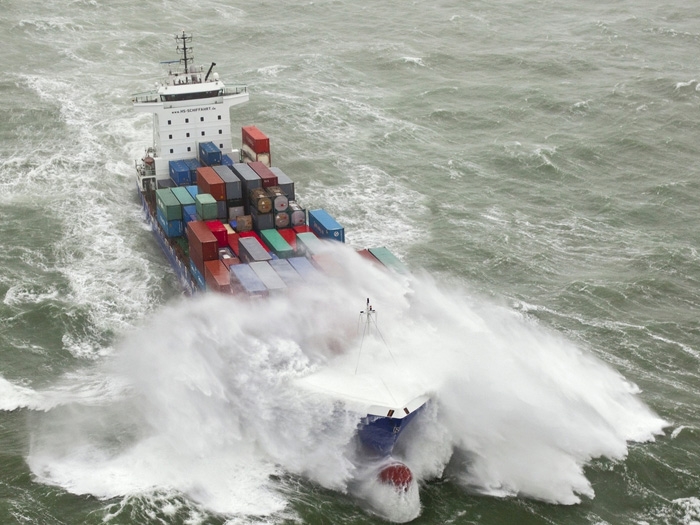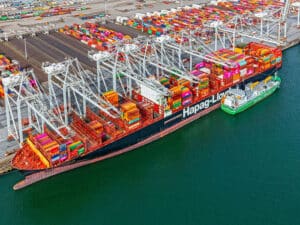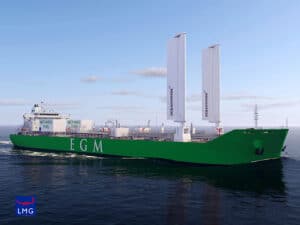
Damen’s in-port BWTS goes to sea
Written by Nick Blenkey
In normal conditions, the InvaSave system will sit on a barge in port, but IMO test protocols call for shipboard tests, so a system is now at sea on this 800 TEU box ship
JANUARY 20, 2016 — Although Damen’s InvaSave ballast water treatment system is designed for use in port, a unit is currently at sea in an 800 TEU container vessel for shipboard testing in line with the requirements for IMO type approval.
Designed as an alternative to onboard ballast water treatment systems (BWTS), the InvaSave technology can be supplied packaged in a self-sufficient mobile container that can be put onboard a service barge or moved around the port on a trailer or a pontoon.
A vessel needing to discharge its ballast water can connect to the InvaSave unit, which then processes the water and discharges it in the port in compliance with the IMO D2 standard. For vessels with much larger ballast water capacities, it is possible to interconnect several systems. If mobility is not required, the InvaSave containers can also be stacked and interconnected on shore.
The InvaSave technology has been successfully tested in various water conditions and the official land-based testing was completed at the MEA test institute in the Netherlands last year. Now shipboard tests have commenced this week on board of the 800TEU container vessel Henrike Schepers.
 Inside the InvaSafe container
Inside the InvaSafe container
Test protocols are in line with IMO ballast water management (BWM) convention test guidelines and additional requirements of the Dutch flag state. IMO type approval is expected to be obtained in third quarter 2016 and a patent is pending.
Damen’s Manager Ballast Water Treatment, Gert-Jan Oude Egberink says, “InvaSave is the world’s first and only technology on the market today to treat ballast water at discharge in only one step. It can therefore serve as a port-based alternative for those shipowners that may not want to retrofit an on board treatment system, perhaps because their ships operate on non-exempted fixed routes or their ships are so old as to make any investment in such a system prohibitively expensive. Alternatives like InvaSave are also required for ports that need to provide backup in the case of emergencies when ships’ on board treatment systems fail.”
The first InvaSave systems will be operational at Groningen Seaports located in the Dutch Waddensea, a protected Unesco world heritage site, after the IMO BWMC enters into force. This project is being developed with the aid of a subsidy from Waddenfonds, a Dutch foundation that aims to protect and develop the ecology and economy of the region. The port service will be provided by the Dutch waste company Van Gansewinkel.
“Port-based ballast water treatment has added value for ports clients as it increases the support services offered to customers, it will prevent expensive delays in ports caused by failing onboard systems,” says Mr. Egberink.





Leave a Reply
You must be logged in to post a comment.